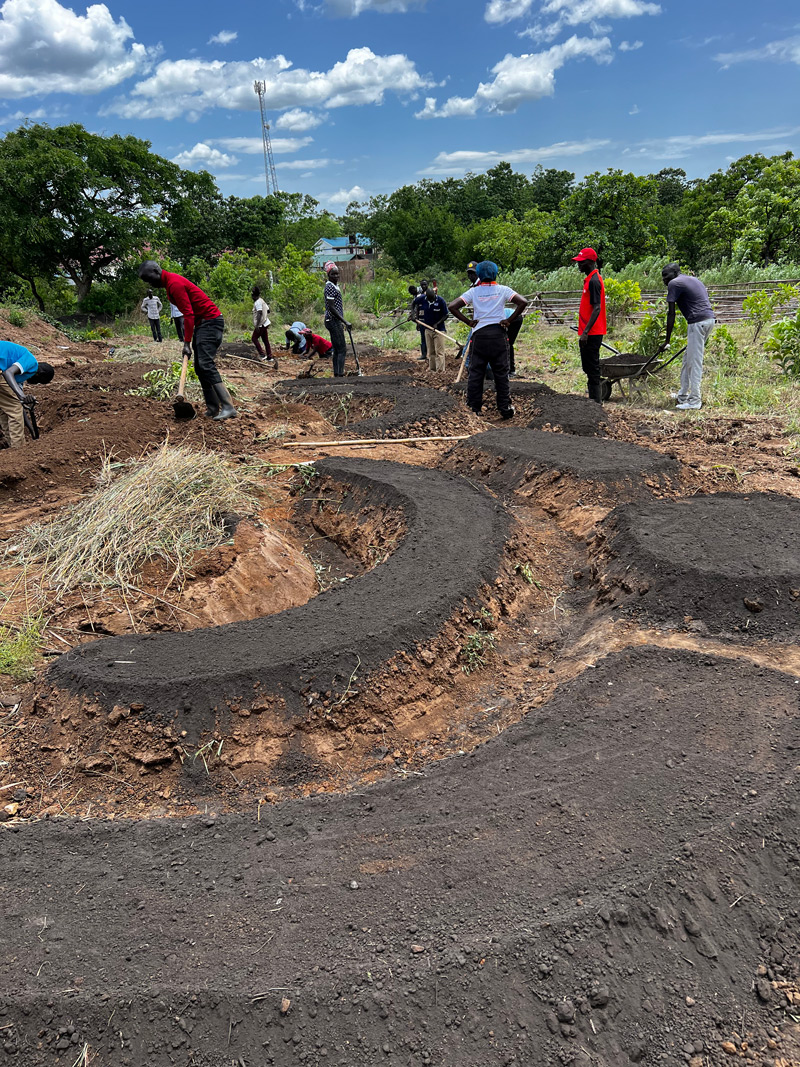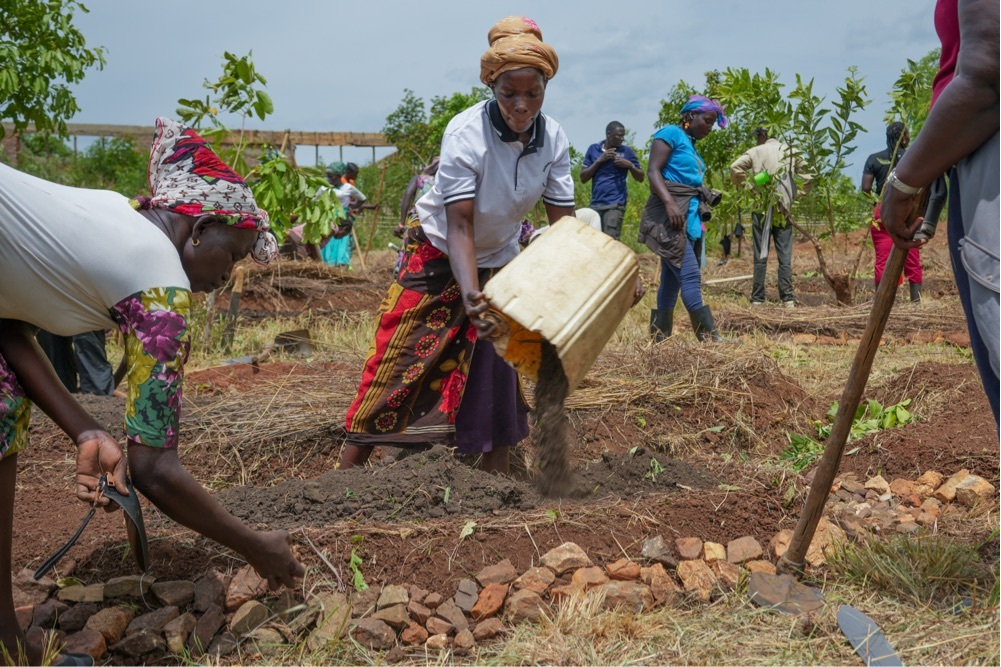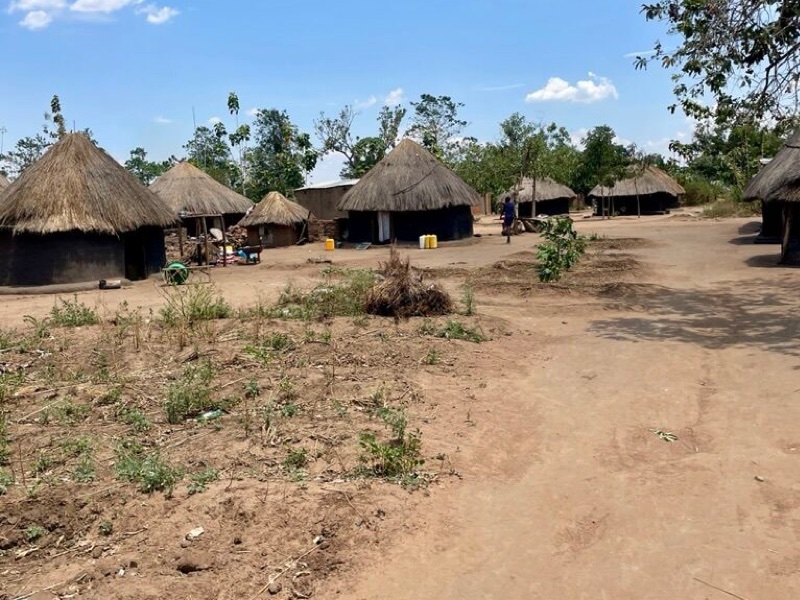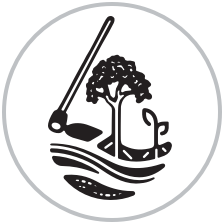Resilience Design brings regenerative agriculture to the humanitarian sector, backed by advanced science.
Drawing heavily from permaculture design, passive water harvesting, nature-based solutions, agroecology, and agroforestry, it promotes tailored, community-led interventions informed by robust assessments and analyses. The RD Approach uses local knowledge and resources to create an ecologically-driven, whole system design. It prioritizes hydrological stabilization, creating living soils, and building biodiverse systems.
Whole Systems DesignWhole Systems Design
SoilsSoils
RD prioritizes soil health through deep soil preparation, integration of diverse organic matter, microbe inoculation, ground covers, mulching, planting a variety of vegetation types and layers, biofertilization, and embedding plant material via chop-and-drop techniques, among others, to provide a regenerative supply of nutrients to the soil. This supports a healthy and living soil microbiome that is needed to supply plants with a steady stream of macro and micronutrients.
-
 Phasellus fermentum malesuada phasellus netus dictum aenean placerat egestas amet. Credit: LOREM
Phasellus fermentum malesuada phasellus netus dictum aenean placerat egestas amet. Credit: LOREM -
 Phasellus fermentum malesuada phasellus netus dictum aenean placerat egestas amet. Credit: LOREM
Phasellus fermentum malesuada phasellus netus dictum aenean placerat egestas amet. Credit: LOREM
BiodiversityBiodiversity
RD planting strategies increase the level of functional and structural biodiversity through layering annual and perennial vegetation to ensure stability and meet diverse production goals.


HydrologyHydrology
The RD approach to rainwater management supports erosion control and increases water availability in the soil, helping reduce the impacts of flooding, drought, and erratic rainfall. With these types of weather patterns increasing in frequency and intensity, stabilizing the hydrology of the land is critical.
The RD Approach encourages farmers and those who work with them to start at the top of the landscape and observe how water flows across the site. Once the slopes and nutrient flows are understood, micro and macro rainwater harvesting and flood mitigation techniques – such as contour planting, bioswales, half-moon berms, check dams, soil pitting, and more – are used to prevent soil erosion and increase water and nutrients banking in soils for optimal plant production and health.


